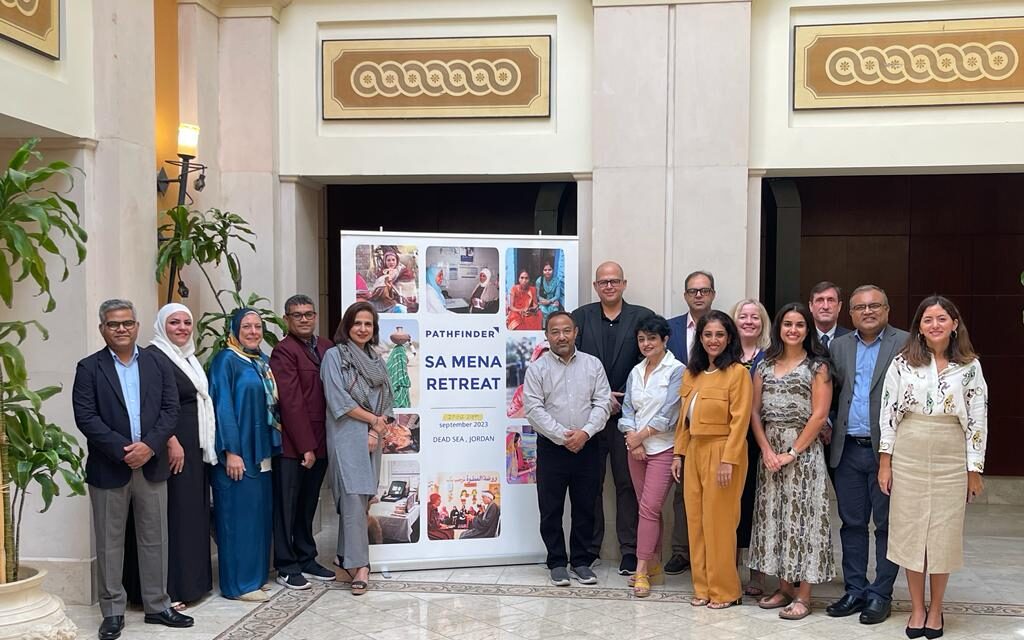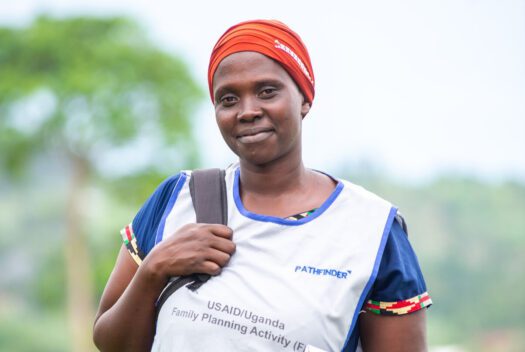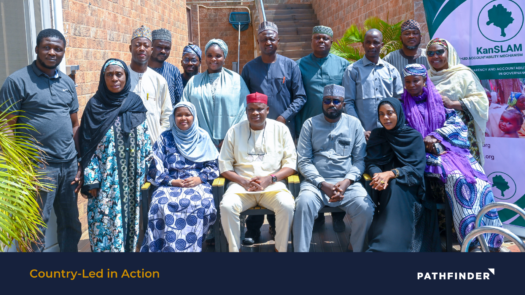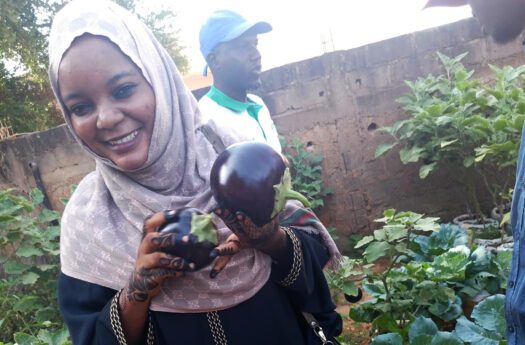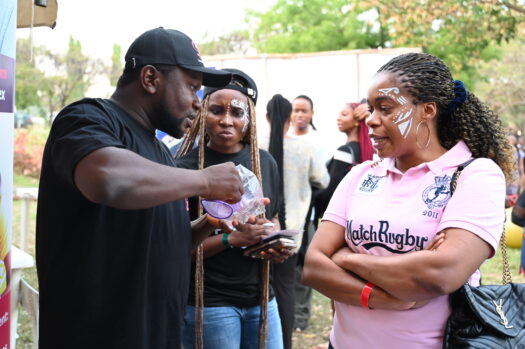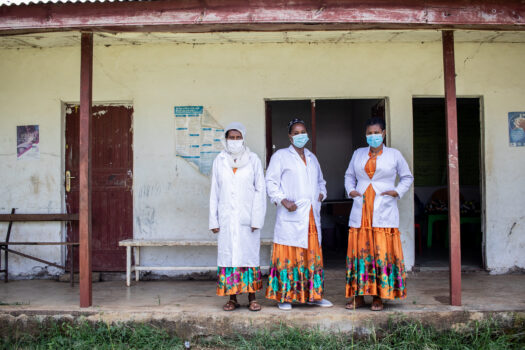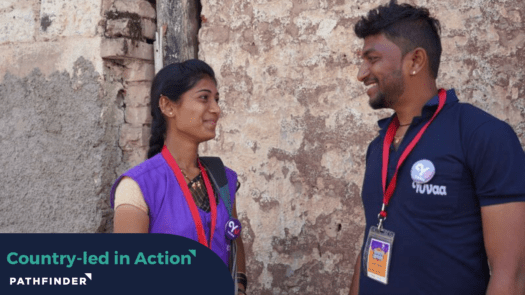At Pathfinder, we know that paths are made by walking—and I know that too. When I started along my own career path in the international development sector 30 years ago, I never would have guessed that I would spend years guiding international nongovernmental organizations to re-imagine the way they do business.
Throughout my career, I have played a role in pivoting organizations toward a more “country-centered” approach—ensuring that each team in the countries where the organization worked had strategies, operating models, project design models, program implementation approaches, and country leadership that originated in and responded to the communities served. These efforts articulated country-specific needs and perspectives, significantly reduced expatriate leadership roles, leveraged focus groups to inform project development, seconded staff to government partner agencies, and introduced systems mapping and Human Centered Design.
Yet they always fell short. Power, represented by global governance, leadership positions, authority, and resources, didn’t change much.
What I’ve learned from working for the most respected brands in the development sector is that change is hard, especially when it involves shifting power structures. Two key tenets of adaptive leadership are crucial to transformative change: take smart risks smartly—stay tethered to your vision and the changes that you want to see—and embrace disequilibrium.* Transformative change is born through discomfort. If the organization isn’t uncomfortable, it isn’t changing.
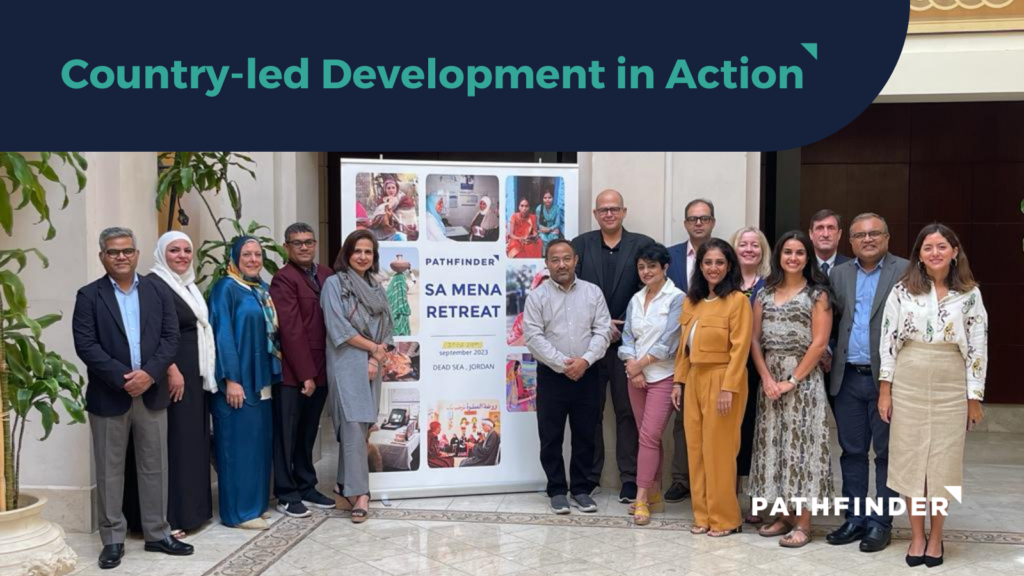
As humans, we are wired to do the opposite. Thus, it takes clear intention, a concerted effort, and a certain level of brazenness to truly “do development differently.” At Pathfinder, we are committed to doing just this. But it isn’t easy. While innovation is applauded in the programs we design and the proposals we submit, it is approached with caution in finance and operations given the nature of risk in these areas.
As Chief, Global Services, at Pathfinder, I work closely with the rest of the Leadership Team to support leaders across Grants and Contracts, Procurement and Administration, Information Technology, Global Security, Human Resources, and Safeguarding to make changes that empower our teams outside of the US. We work to ensure the teams in the countries where we have programs play a frontline role in managing their own operations, instead of answering to teams based in the US—as our sector has historically done. At Pathfinder, we refer to this model as our “country-led strategy.”
Fully implementing our country-led strategy means taking smart risks every day. This past year, for example, we changed our annual planning and budgeting process to make sure our country teams are in the lead. We called on them to articulate their vision, strategy, and goals so that the rest of us could align ourselves with their priorities and ensure their success. In the past, the process ran in reverse, with countries’ plans and budgets based on global priorities, and teams in the US driving organizational strategy.
From the new annual planning and budgeting process, we had to ask ourselves:
- How do we shift our indirect resources to ensure investment in our country teams?
- How do we leverage the immense talent across the 16 countries where we have offices, and how do we recruit more positions that work globally and regionally in our countries of operation?
- How do we shift authority and accountability for our finance and operations functions to our Country Directors, rolling up under our Presidents in Africa and South Asia, while ensuring clear standards, controls, and best-in-class services?
These questions drive us every day. They energize us. And they drain us. Change is hard, and it is messy. Yet we know that we need to push ourselves in taking smart risks smartly and embracing disequilibrium. After all, we are Pathfinders.
